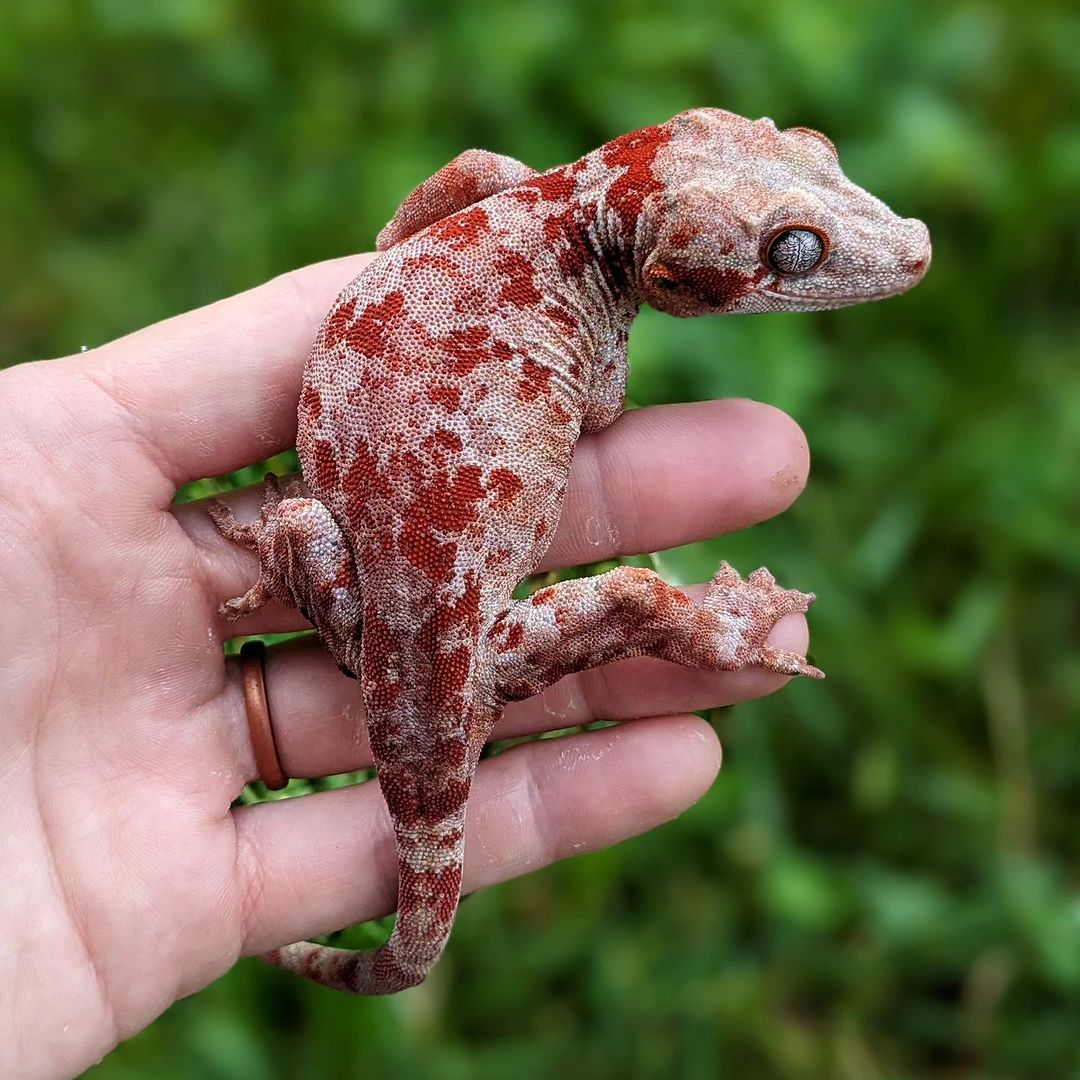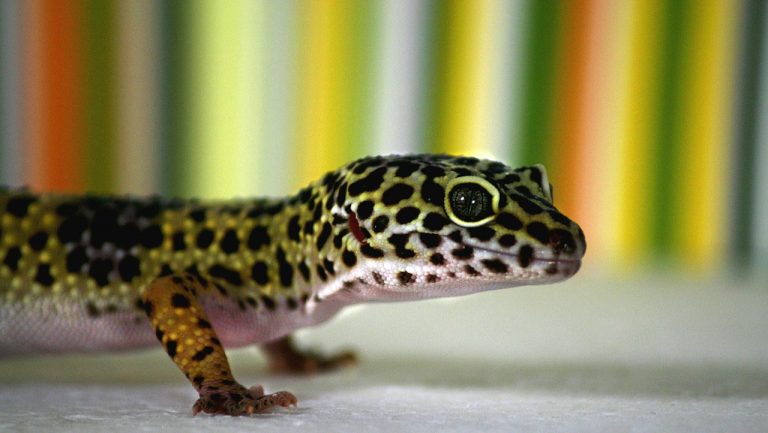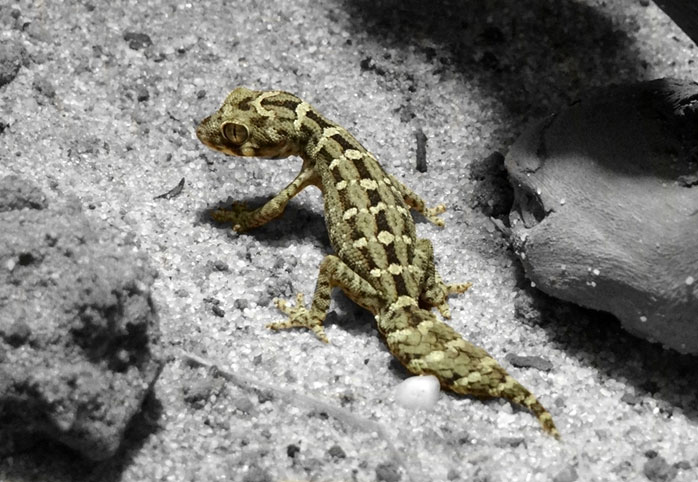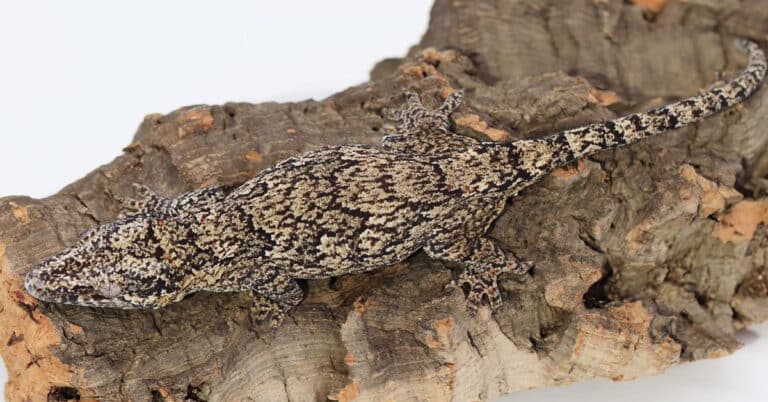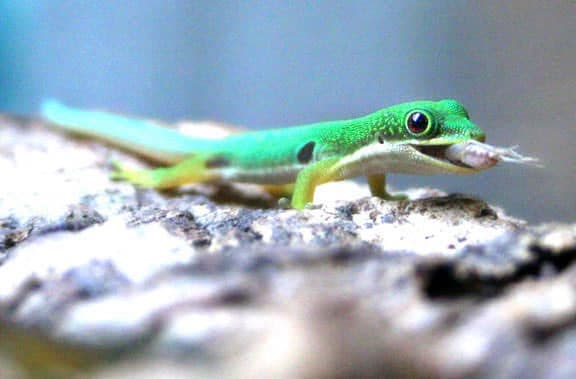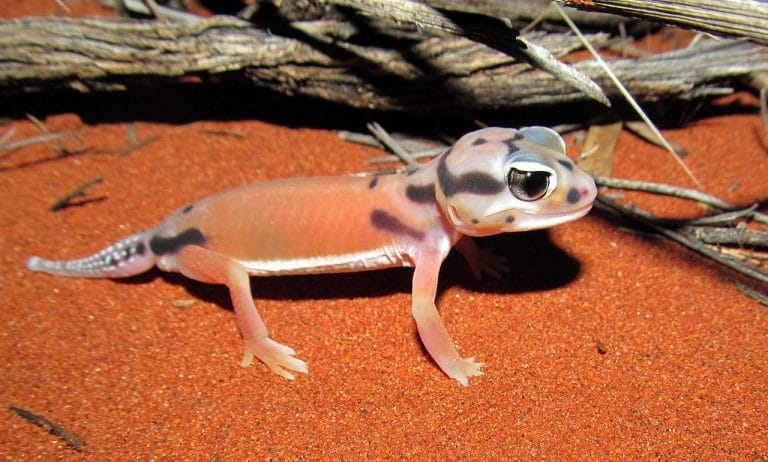Gargoyle Gecko – A Beautiful Masterpiece of Reptiles Realm
Have you ever wondered what secrets nature incorporates into its works of art? If so, you should explore the fascinating world of reptiles to learn thrilling facts about gargoyle geckos!
These New Caledonian creatures are a tapestry of vivid hues and sophisticated designs that evoke ancient structures. They entice reptile novices and enthusiasts alike with their friendly personalities and distinctive head emblems.
So, are you wondering how gargoyle geckos master the art of life? Come along as we set out on an adventure to unravel the secrets of nature’s beautiful masterpieces!
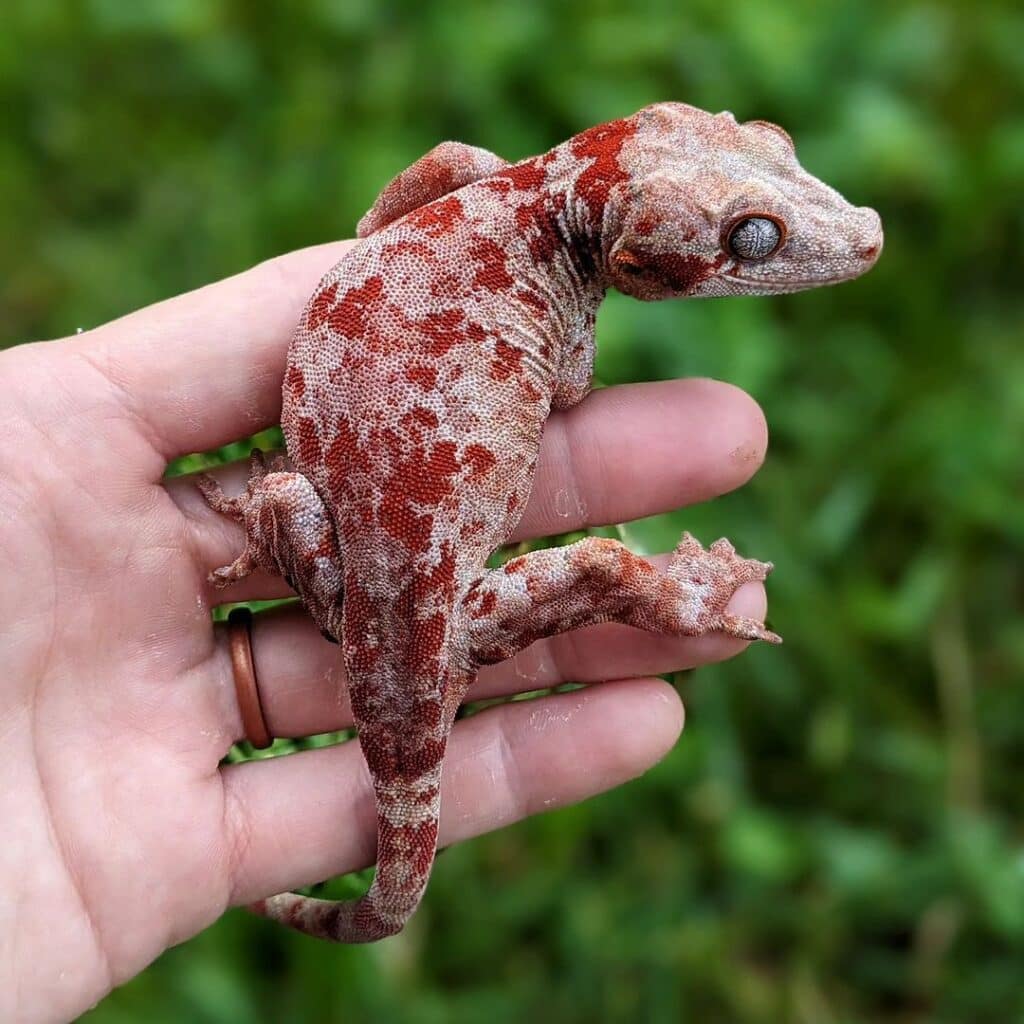
Gargoyle Gecko Morphs & Colors
Due to their easy maintenance needs and a vast range of colorations, known as morphs, gargoyle geckos have become a popular choice of reptile for novices.
The color and pattern of gargoyle geckos are genetically determined based on three factors: base pattern, pattern color, and base color. This is referred to as the “morph” of the animal. Initially, gargoyle geckos were only available as pets in predominantly gray, white, and black colors, however, breeders have continued to develop and produce new morphs.
Here are five of the most stunning variations of the gargoyle gecko.
1. Grey Gargoyle
The gray gargoyle morph lives up to its name as it grants the gecko a stone-like camouflage effect. The gecko’s silver-gray eyes enable the morph to stand apart and make it genuinely unique. These geckos’ stone-like glance is further enhanced by the fact that they generally have a gray base color with spots and patterns of darker gray and black all over their bodies.
2. Orange Blotch Gargoyle
The orange blotch gargoyle morph is distinguished by its delicate orange-brown coloring with eye-catching orange bands that extend from their backs to their tails and even down their legs. They are an exceptionally beautiful and distinctive morph due to their silver-gray eyes, which stand in stark contrast to their coloring.
3. Orange Stripe
Compared to the orange blotch morph, which has thinner orange stripes that run horizontally along the body, the orange stripe morph has more robust orange stripes that extend vertically. Their base color might vary quite slightly, but it generally comes in an orange-brown hue that is on the darker side of the spectrum. The gecko’s head, tail, and legs likewise have plenty of stripes, however, they are smaller and less symmetrical.
4. Pink Base Orange Super Blotch Gargoyle
The pink base orange super blotch morph of Gargoyle Geckos is a unique variation with complex coloring. The entire body of these geckos is covered with an abundance of orange spots on a pink background. The orange spots have irregular sizes and shapes, and they frequently contain black marks as well.
5. Pink Gargoyle
Years of scientific study resulted in the creation of the pink Gargoyle Gecko. This unusual coloring is completely synthetic and can’t be observed in nature. These geckos have beautiful black and gray stripes and blotches on top of a pink background that covers every inch of their body. They are a wonderfully unique and attractive morph.
How Long Do Gargoyle Geckos Live?
Gargoyle geckos have comparatively extended lifespans. They mature between the ages of 12 and 18 months, after which the females release 2 eggs every 4-6 weeks for approximately 6 years. The sole difference in life expectancy between the sexes is caused by calcium concerns brought on by females’ egg-laying. Your female gecko should have a long life if issues are caught early when only the tail is displaying health abnormalities.
On average, gargoyle gecko lifespans extends from 15 to 20 years. However, they can live up to their full potential only with properly directed care. Just like any other pet reptile species, gargoyle geckos require top-notch maintenance to remain healthy. These pet lizards are susceptible to illness and deteriorating health if their habitat isn’t kept clean and they don’t eat enough.
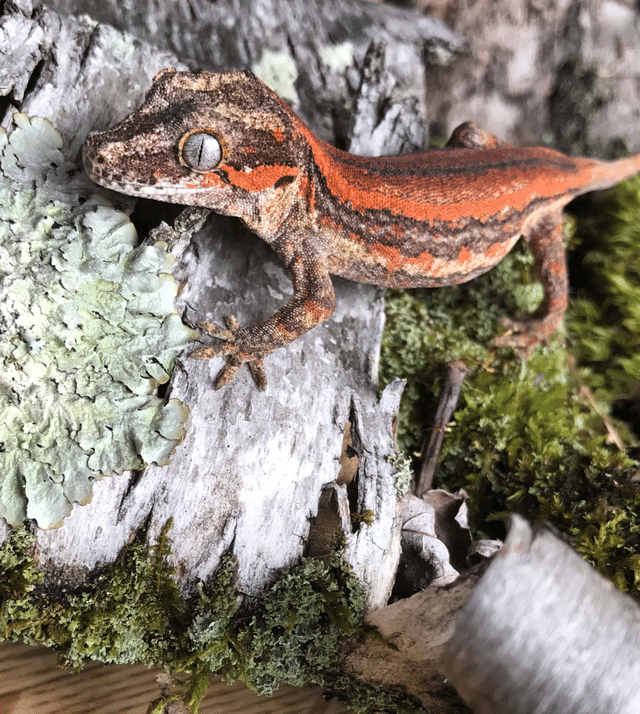
Gargoyle Gecko Habitat and Enclosure Needs
Gargoyle geckos are native to the semi-tropical island group of New Caledonia, which is close to Australia. In the wild, they dwell in dense forests and enjoy climbing trees. Even though they can’t hold glass or other smooth surfaces, their claws have specialized branch-gripping abilities that make them exceptional climbers.
For the best gargoyle gecko care, you can use their vertical tendencies to your advantage and construct a natural terrarium full of branches, leaves, vines, hanging plants, and bark.
Here are the top 5 factors to take into account when determining the habitat and enclosure requirements for gargoyle geckos.
1. Enclosure Size
The gargoyle gecko tank size should be sufficient to accommodate your gargoyle gecko securely and pleasantly. Each adult will require a place that is at least 24 inches high, 16 inches wide, and 16 inches deep.
A reasonable rule of thumb is to start with a 10-gallon tank for a single gecko and increase it by 5 gallons for each additional gecko, a 15-gallon tank for a pair of geckos, and a 20-gallon tank for a triple. To give your gecko plenty of room to climb, purchase tanks that are higher than they are long.
2. Decoration
Add a layer of an absorbent substrate to decorate a gargoyle gecko aquarium. You can also use shredded newspaper, bark chips, or a mixture of soil and moss. Then, include a variety of climbable branches and vines, utilize some branches with fresh bark to absorb moisture, and organize the climbing surfaces so that your gecko has an array of access points to the various areas of the environment.
When it comes to the setup of their habitat, artificial and live plants are also essential. For the gecko to drink, the plants will accumulate water on their leaves. Humidity levels can also be improved by live plants.
Ficus benjamina, Philodendron scanden, and devil’s ivy are all suitable options. Create a tiny hiding box at the enclosure’s base and add some damp sphagnum moss to provide the gecko with a humid environment for shedding.
3. Water
To maintain humidity in their tanks, gargoyle geckos will require a mister. The majority of the water that gargoyle geckos need comes from the mist and humidity in the air rather than from a water bowl, which they rarely use.
Always keep fresh water available in your gecko’s enclosure, even if they don’t drink from it frequently. To maintain cleanliness, use a small or medium-sized bowl and replace the water periodically.
4. Humidity and Temperature
Gargoyle geckos require conditions that are primarily warm and humid. It is therefore recommended to maintain moisture levels between 50 and 70 percent and temperatures between 72 and 75 degrees Fahrenheit.
To help manage the humidity and temperature as needed, employ misters, water sources, and heating mats or bulbs. Make sure that no heating source you employ heats up to a temperature higher than 85 degrees Fahrenheit.
5. Lighting
Gargoyle geckos spend most of the day sleeping. The majority of gargoyle geckos won’t require any extra illumination in their tanks, however, they do require moderate UVB exposure time to stay healthy. If their enclosure is next to a window, they can get the UVB rays they require directly from the sun or via red or blue UVB lamps.
Gargoyle Gecko Diet and Feeding Patterns
Due to their omnivorous nature, gargoyle geckos like eating a range of fruits and insects. Gargoyle geckos kept as pets can be fed formulas designed for geckos that are blended with water or baby food. Never feed your gecko baby foods with citrus or fruit flavors. For your gecko, flavors like banana, apple, peach, and pears are all safe choices.
To keep your gecko healthy before feeding it insects like flies, mealworms, wax worms, crickets, or locusts, dust it with calcium powder. Offering your gecko mixes 2 to 3 times per week and insects once per week would be an appropriate nourishment routine.
If you keep formula mixtures in your gecko’s tank for longer than a couple of days, they might spoil. After a few hours, eliminate any remaining insects.
These Domesticated Soft Grown Geckos are Quick to Respond In Handling.
The Gargoyle gecko is a variety of geckos only seen on the southern parts of the Island of New Caledonia. The indiscriminate deforestation for financial gain and increasing urbanization has taken its toll on the active erstwhile natural abodes of the species Rhacodactylus auriculatus, also called the Gargoyle Gecko or the New Caledonian bumpy gecko.
CITES (Convention on International Trade in Endangered Species of Wild Flora and Fauna) is now considering the positive inclusion of these geckos under the protected species of animals and is bringing restrictions for the export of these animals. It was Bavay in 1869, who described the first gecko of this species.
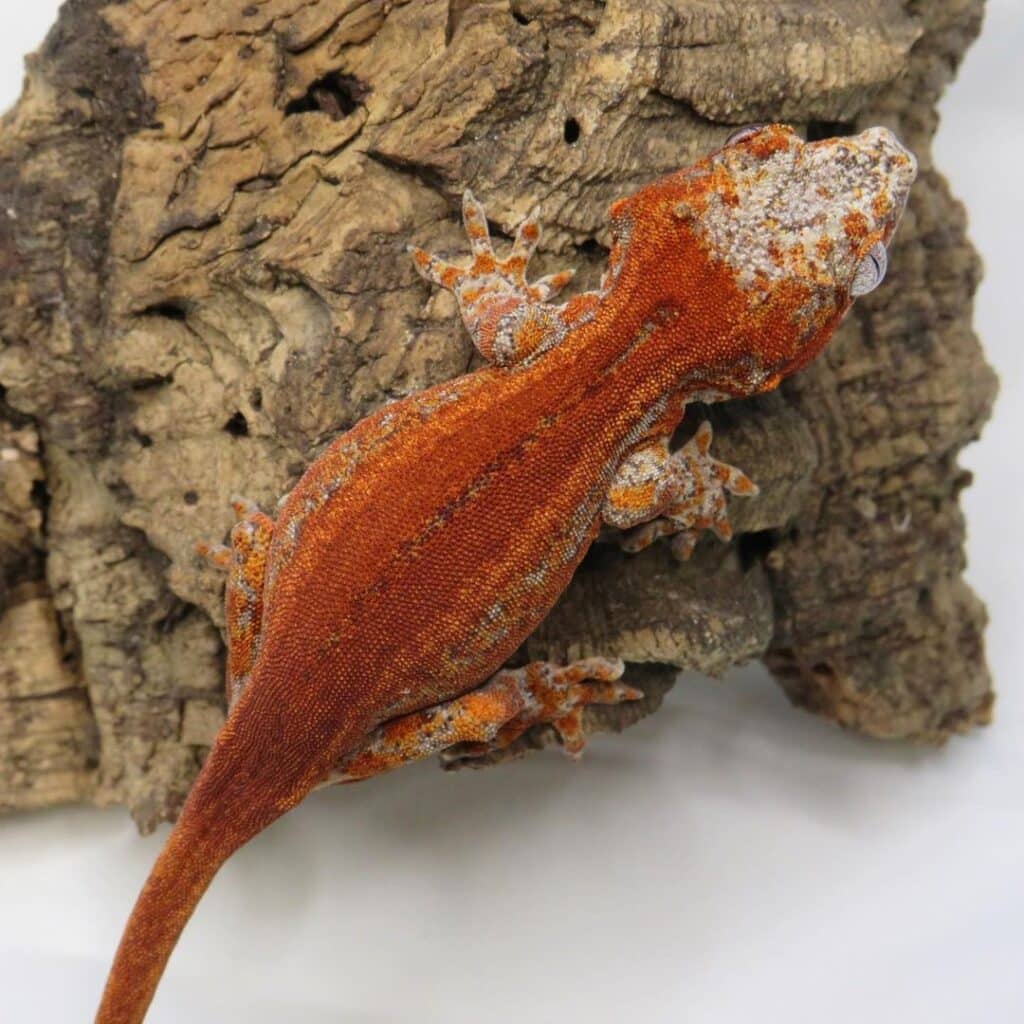
As a Pet
Housing
On the subject of Gargoyle Gecko Care, it is ideal to shelter them independently, since you cannot overrule the unfortunate possibility of their being violent with their cage mates. However, one male gecko seems to do well when caged with females alone. One gecko needs a terrarium of 20-gallon capacity or bigger. Never shelter two male geckos in one enclosure.
You can house a pair of either a male and a female or two females with a closed space of at least about 30 gallons. Instead of horizontal ones, opt for vertically oriented terrariums. Since Gargoyle geckos like climbing, keep decorations and branches for climbing and perching. To enable correct vitamin absorption, it is obligatory to have a full spectrum of UV lighting.
Handling
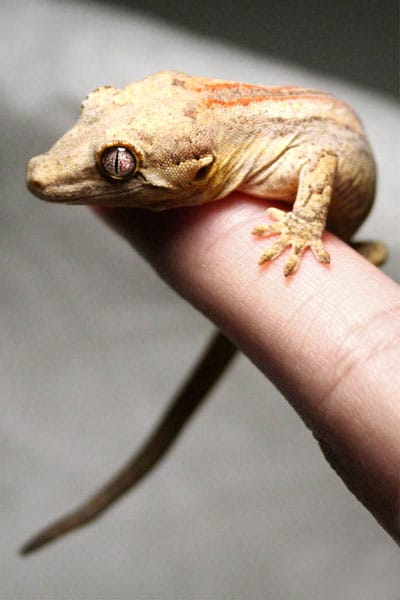
Prior to handling the newly obtained Gargoyle geckos you have to allow them to feed normally. Always avoid grabbing a gecko from above; rather scoop them from below. Because some little gargoyle geckos try to bite or leap and escape, try to handle them on the floor to avoid injury. After several sessions of five-minute handling, the geckos become passive and get acquainted. A domesticated soft grown gargoyle gecko is quick to respond in handling.
Temperature and Humidity
Variations in temperature easily have an effect on gecko care. If you control the temperature between 70-80°F, and keep the average humidity level at around 50% by misting the gecko tank with de-chlorinated water twice or thrice daily, your pet geckos will stay happy. Make sure that the enclosed space is moist, but not soaked, as stagnant water can affect their health.
Breeding
Breeding is quite easy. Just place a healthy male and a healthy female Gargoyle gecko together, they breed without difficulty, but Gargoyle geckos being quarrelsome, house them separately and bring them together for just a limited time. They have a rough breeding process and you would do well keeping an eye open lest it led to injury.
Minor injuries like tail shedding are normal. House an adult gecko in 20-gallon tank. You must leave the male Gargoyle gecko either isolated or as a breeding pair or with two females. Never house males together as they will fight. Young ones are quarrelsome with cage mates, sometimes resorting to cannibalism of the toes, tails and other extremities are a common feature. At all times other than the mating period, keep them isolated, irrespective of the gender or age.
How Much Does a Gargoyle Gecko Cost?
A gargoyle gecko is generally available for as little as $50, making it one of the least expensive gecko species. The size, pattern, and coloration of each lizard will affect the price of a particular gargoyle gecko. However, you should typically budget $50 to $200 for a healthy pet gargoyle gecko.
Be prepared to spend even more money if you’re seeking a gargoyle gecko that is exceptionally unusual or exotic-looking, as certain specialized morphs, or genetically changed color patterns, can fetch prices of over $1,000.
In general, young gargoyle geckos are less expensive than adults. Remember that a female gecko tends to be more valued and likely to cost a lot more than a male.
Final Thought
As you can see, gargoyle geckos fall into the most prevalent lizard pets, as they are stunning to behold, easy to care for, and ideal for novice reptile keepers. The setup of their terrarium is quite straightforward and merely requires some basic supplies. Your gargoyle geckos will have prolonged and fulfilling lives as long as you provide them with proper attention and nutrition, and they will provide you with loads of delight as you accomplish so.

Nato is a content writer and researcher with a background in psychology who’s eager to explore the wonders of nature. As a travel enthusiast and animal lover, she hopes to inspire others to discover and cherish the beauty and importance of the natural world.

